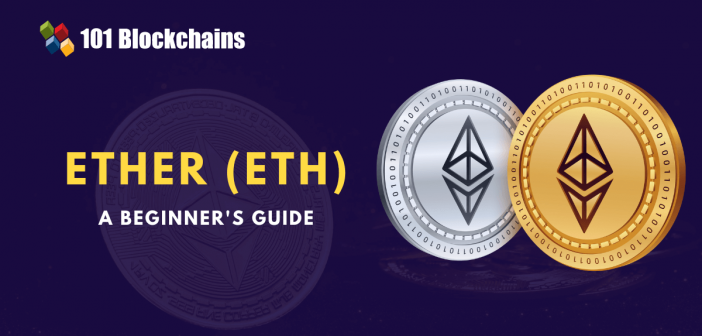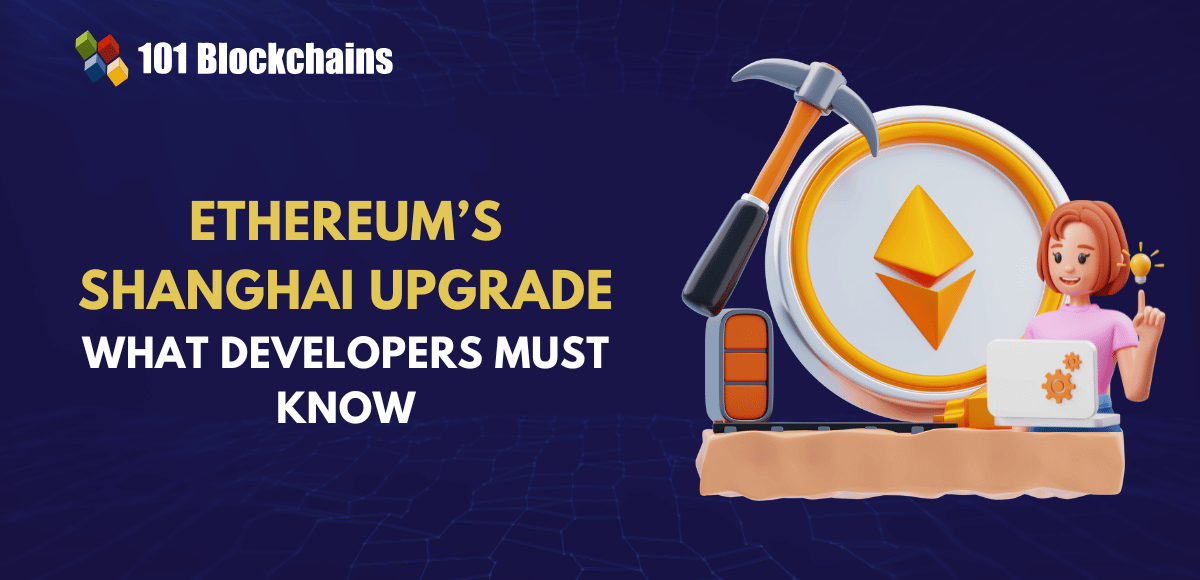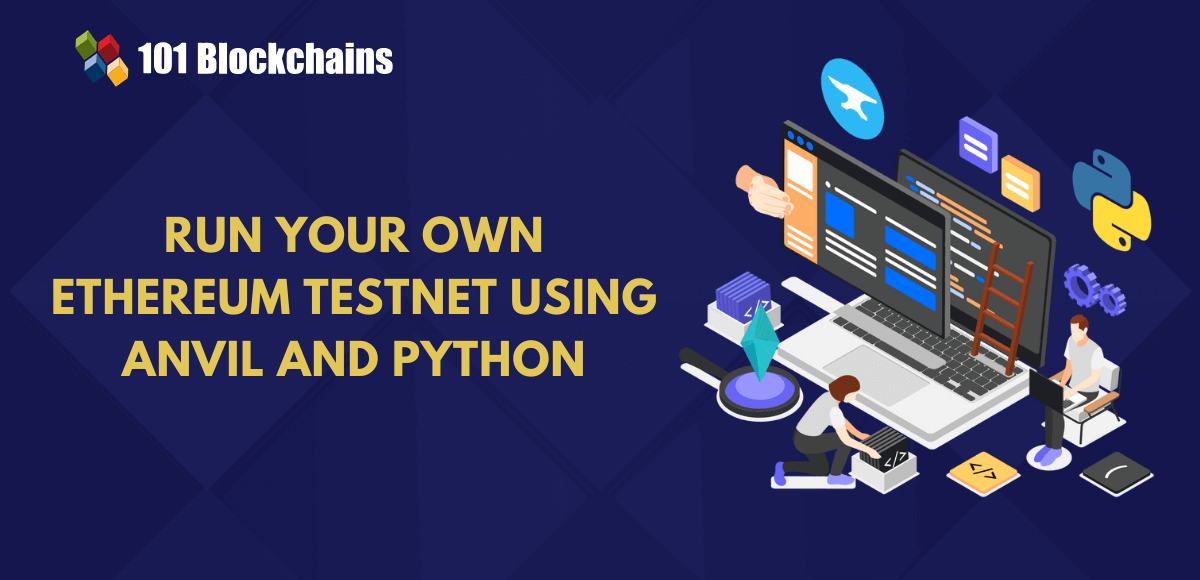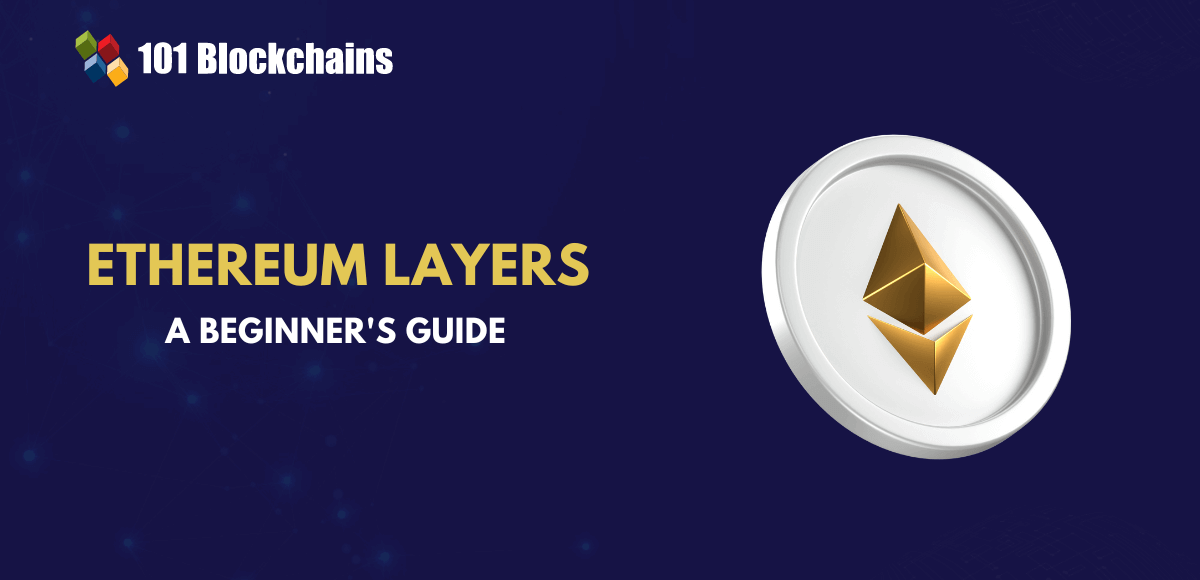Learn how blockchain truly works, master key definitions, and uncover what makes smart contracts so "smart." Dive into the fundamentals, gain valuable insights, and start your blockchain journey today!

- Ethereum
James Howell
- on November 04, 2022
What is Ether (ETH)? – A Beginner’s Guide
Ethereum has become one of the biggest blockchain networks transforming the conventional notions regarding the use of blockchain technology. While many people assume that blockchain is all about creating cryptocurrencies, Ethereum offers the facility of programmable smart contracts. Have you been following the Ether price estimates recently? Well, Ether ETH, the native token of Ethereum definitely commands a lot of attention from crypto enthusiasts and blockchain professionals in humongous proportions.
Bitcoin offers a new form of digital currency and a store of value driven by the power of blockchain. On the other hand, Ethereum provided a massive decentralized network to enable the operations of smart contracts. Over the years, Ethereum has evolved into a massive ecosystem of decentralized applications, with new solutions emerging every day.
While discussions about Ethereum and its functionalities are quite prevalent, you are less likely to find detailed guides on Ether. The following discussion offers you a detailed introduction to the cryptocurrency of Ethereum, i.e., Ether, also known as ETH. You can learn about the processes through which Ether ETH is created and burned, alongside its important uses. Most important of all, the discussion emphasizes specific pointers which define the value of Ether.
Excited to build your skill in Ethereum development by leveraging the ethers.js library? Enroll Now in Ethers.Js Blockchain Developer Course!
Cryptocurrency Basics

An introductory overview of Ether currency would remain incomplete without emphasizing cryptocurrency basics. Cryptocurrency serves as a medium of exchange featuring the security mechanism of a blockchain-based ledger. The currency could refer to any medium of exchange that enjoys widespread recognition and acceptance as payment for products and services. On the other hand, a ledger would point to a database that can maintain a record of the transactions for the cryptocurrency.
The Ether blockchain association is easier to understand when you look at the basics of cryptocurrencies and their working. Blockchain could help users in making different transactions on the ledger without relying on trusted third-party providers for maintaining the ledger. After the introduction of Bitcoin, many other cryptocurrencies have developed on different blockchain networks.
Want to become a Cryptocurrency expert? Enroll Now in Cryptocurrency Fundamentals Course
Definition of Ether

The fundamentals of cryptocurrency create the perfect stage for answering ‘what is Ether‘ and determining its significance. Interestingly, you need to focus on the brief overview of Ethereum before identifying the definition of Ether. Ethereum has played a crucial role in developing blockchain technology as something more than the mere foundation for cryptocurrencies. With the help of Ethereum, developers have successfully discovered new opportunities for creating decentralized applications or dApps.
The decentralized applications are based on smart contracts and offer flexibility for designing applications for a wide range of use cases. Interestingly, you can build applications on top of the Ethereum network, such as decentralized exchanges, DeFi protocols or tokenized assets. However, you would need currency for executing transactions within the Ethereum ecosystem. This is where you would come across Ether.
The Ether crypto definition paints it as the native token of the Ethereum network. It can serve many useful applications within the Ethereum landscape and serves as an acceptable payment tool for facilitating transaction fees. Interestingly, ETH would serve an important role in the validation and proposal for blocks on the mainnet after the transition of Ethereum to a new consensus model.
Build your identity as a certified blockchain expert with 101 Blockchains’ Blockchain Certifications designed to provide enhanced career prospects.
What is Ether Used For?
The definition of Ether paints a generic impression of its capabilities as the native token or cryptocurrency of Ethereum. Apart from serving as a method of payment in the Ethereum network, users can also try Ether investment in many other use cases. For example, Ether can serve as the primary tool for collateral in the case of DeFi lending markets. You can also use Ether as a unit of account within NFT marketplaces. In addition, Ether can also work as payment for the purchase and sale of real-world goods and services.
The most significant answer to “what is Ether used for” would also reflect on its role in the development of decentralized applications. Ethereum offers the flexibility for developing decentralized applications, which consume a share of the computing power pool. Now, Ethereum has a finite pool of computing power and needs a mechanism for determining the equitable allocation of computing resources. Failing such a distribution of computing power, malicious nodes can consume all network resources while barring access to other participants. Ether serves as a viable solution to the problem by enabling a pricing mechanism for access to computing power on Ethereum.
Users must pay Ether currency to prioritize their transactions on the Ethereum blockchain. The payments required for blockchain transactions would qualify as gas fees for the concerned transaction. It is important to remember that gas fees could depend on the amount of computing power required for executing the specific transaction.
At the same time, the evaluation of gas fees also accounts for the demand for computing power throughout the network for the specific instance. As a result, malicious dApp transactions with an infinite loop would exhaust Ether and end automatically, thereby returning the network to normalcy.
Excited to learn the basic and advanced concepts of ethereum technology? Enroll Now in The Complete Ethereum Technology Course
Is Ether the Same as Ethereum?
Another prominent highlight in an introduction to Ether crypto would point at the confusion between Ether and Ethereum. The two terms are used interchangeably in the majority of discussions on cryptocurrencies and blockchain applications. However, Ether is completely different from Ethereum in the fact that ETH is a cryptocurrency while Ethereum is a blockchain network. You can imagine Ether as the fuel which powers the vehicle of the Ethereum blockchain network. The value of Ether goes through consistent fluctuations on the grounds of demand and supply factors.
You can also identify the answers to “Is Ether same as Ethereum?” in the use of ETH as a reward for developers and miners for maintaining the security and efficiency of the Ethereum network. On the other hand, the network itself cannot be served as a reward to developers and miners. You can develop better clarity regarding the functionalities of ETH by reflecting on the methods for minting and burning Ether.
Want to learn the basic and advanced concepts of Ethereum? Enroll in our Ethereum Development Fundamentals Course right away!
Minting Process for Ether
Minting refers to the process of creating new Ether on the Ethereum ledger, thereby defining the difference between the Ether blockchain and Ether cryptocurrency. The underlying protocol for the Ethereum blockchain is responsible for the creation of new Ether, and it is noteworthy that a user could never create Ether. On the contrary, Ether is minted in the form of rewards for proposed blocks at epoch checkpoints for validator activity associated with achieving consensus. The total amount of ETH issued would depend directly on the number of validators alongside their stakes.
Subsequently, the total ETH tokens issued in the mint would be distributed equally among validators, considering that validators remain online and follow acceptable norms of behavior. However, the distribution of newly minted ETH tokens would also depend considerably on the performance of validators.
The block proposer receives around one-eighth of the total tokens issued in the mint, while other validators receive the remaining tokens. You can understand ‘what is Ether‘ and how it powers Ethereum by reviewing the process for its creation. The users responsible for proposing blocks could also receive tips from the transaction fees alongside MEV-related income. It is important to remember that these rewards are provided from recycled Ether rather than newly issued tokens.
Start learning about second-most-popular blockchain network, Ethereum with World’s first Ethereum Skill Path with quality resources tailored by industry experts Now!
Process of Burning Ether
Just like creation, the burning of Ether ETH is a prominent highlight in an introduction to the cryptocurrency of Ethereum. While Ethereum creates Ether in the form of block rewards, it can also ensure the destruction of Ether through burning. Upon burning Ether, it moves permanently out of circulation. Interestingly, the burning process happens with every Ethereum transaction.
Upon payment of transaction fees by users, the network destroys a specific amount of base gas fee, defined by the network on the basis of transactional demand. In addition, users could also have a simpler mechanism for establishing transaction fees on Ethereum when the burning process is complemented with estimates of maximum gas fees and variable block sizes. In the case of high network demand, blocks could generally burn more Ether than they could mint, thereby balancing the Ether tokens issued on the network.
Burning is an important component in the working of Ether crypto as it prevents unwanted manipulation of base fees by block producers. Some block producers can opt for malicious actions, such as raising the base fee for others while including their transactions without any costs. Similarly, block producers could ensure off-chain refunds of the base fee, thereby taking away transparency regarding transaction fees.
Denominations of Ether
The Ether price estimates can be quite alarming for beginners with limited resources. As of the time of writing, 1 ETH equaled almost $1250, thereby indicating the need for substantial capital to access Ether cryptocurrency. However, users could also find the opportunity to execute small transactions on Ethereum with denominations of ETH. The most common denominations for Ether include Wei and Gwei and could support small transactions on the Ethereum blockchain.
Transferring and Querying Ether Balance
The introduction to Ether investment best practices would also focus on methods for transferring and querying ETH balance. Every Ethereum transaction features a ‘value’ field for specifying the amount of ETH you want to transfer in the denomination of Wei. Users can specify the sender’s and recipient’s addresses for transferring Ether. If a smart contract serves as the recipient address, then the ETH transfer could work as payment for gas fees upon execution of the smart contract code.
Users could also look for their Ether balance in any account through a review of the ‘balance’ field in the account. The ‘balance’ field can show the amount of ETH a user owns in the denominations of Wei. Interestingly, you can use block explorers like Etherscan to check your ETH address balances. In addition, you can also rely on wallets for querying ETH account balances or through direct requests for ETH balances to nodes.
Want to become a bitcoin expert? Enroll Now in Getting Started with Bitcoin Technology Course
Value Benefits of Ether
The introduction to Ether currency would also emphasize the benefits it offers to users. As a cryptocurrency, ETH serves as scarce digital money you can utilize on the internet, just like popular cryptocurrencies. However, ETH is significantly different from traditional currency and offers some unique value benefits, such as the following.
-
Complete Ownership
Ether brings the advantage of decentralized ownership over your assets. With the ETH balance in your crypto wallet, you don’t have to worry about any centralized authority taking control of your funds. Ether helps you in controlling your own funds within the wallet without any intermediation by third-party authorities.
-
Cryptographic Security
Another significant highlight in answers to “what is Ether used for” would refer to the advantages of security. As a matter of fact, ETH serves as the reward for miners and developers contributing efforts in securing the network. In addition, ETH also ensures user-level safeguards through cryptography for protecting a user’s wallet, ETH balance, and transaction data.
-
Lack of Centralization
ETH provides the foundation for running a completely independent economy within the Ethereum landscape. The decentralized and global nature of Ether prevents any user or agency from taking over authority for the creation or allocation of ETH. Furthermore, the lack of centralization also offers the assurance of freedom from unprecedented changes in the asset’s monetary policy.
-
Accessibility
Cryptocurrencies such as Ether Crypto or ETH can be quite complicated for the average beginner to understand. However, a detailed understanding of Ether basics, its creation, and working could solve the problems. You can navigate the complex topics underlying Ether and its functions with expert training. All you need is an internet connection, a crypto wallet, and the necessary funds for accessing ETH. On top of it, ETH also resolves another problem of accessibility by offering denominations of Ether with Wei and Gwei.
Want to get an in-depth understanding of crypto fundamentals, trading and investing strategies? Enroll now in Crypto Fundamentals, Trading And Investing Course.
Bottom Line
The final impression regarding Ether suggests that it is the lifeline of the Ethereum network. You can think of Ethereum as a virtual nation in the world of blockchain. In that case, ETH is the currency you need for accessing services and offerings on Ethereum. The popularity of Ether blockchain, i.e., Ethereum, continues increasing for the creation of NFTs and DeFi applications alongside many other dApps.
Therefore, ETH has become one of the popular entrants among top cryptocurrencies right now. If you are new to the domain of cryptocurrencies and blockchain, you need to learn about Ethereum and Ether distinctively. Start building your expertise in Ethereum technology and become an expert.
*Disclaimer: The article should not be taken as, and is not intended to provide any investment advice. Claims made in this article do not constitute investment advice and should not be taken as such. 101 Blockchains shall not be responsible for any loss sustained by any person who relies on this article. Do your own research!





